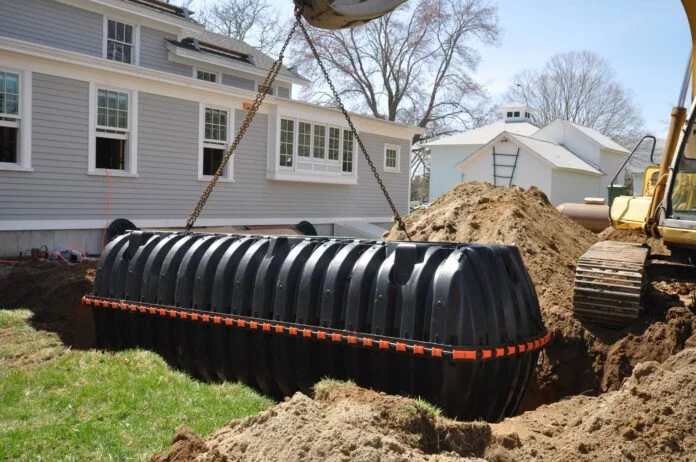Before buying a home with a septic system, request maintenance records, including pumping schedules and repair history. Also, request a perc test and site evaluation. Avoid flushing coffee grounds, chemical drain openers, cigarette butts, condoms, and feminine hygiene products, as they do not decompose quickly and can pollute groundwater. Ensure baffles or sanitary tees protect the septic tank inlet and that the tank is pumped regularly to prevent solids from overflowing into the absorption field.
Budget
Installing a septic system is a complicated project that requires a professional to complete. An unlicensed septic installation can lead to water pollution, costly repairs, and difficulty in selling or insuring your home. Hiring a licensed septic tank pro early on is essential to budget the right amount for the project. You’ll also need to budget for soil testing and excavation. The perc test reveals your property’s soil type and sediment depth so you can choose the right system. The excavation process can disrupt landscaping and driveways. It’s best to schedule it before paving the driveway and sidewalks but after building the main house frame. You’ll need to pay for a permit and licensing fees based on local regulations.
Location
When a septic tank is buried in the ground, it’s a good idea to map out its location. This will prevent you from damaging your system when performing yard work, making it easier to access the tank for servicing. Look in your basement or crawl space to locate the 4-inch sewer pipe running into your yard. Then, walk outside and follow the line with a metal probe. Probe about every two feet. When you reach the tank, you should feel flat concrete, fiberglass, or polyethylene. Many counties keep records of septic systems installed on a specific property. This information is usually included in your home inspection report when you purchase the house. You can also check with the contractor who built your home, as they may have a diagram of where your septic tank is located.
Size
A septic tank is an underground structure that treats wastewater from your house. They’re typically made of concrete, fiberglass, or polyethylene. They separate floatable matter, solids, and grease from wastewater. It then discharges the filtered water into a drain field or leach line for erosion control. Septic tanks vary in size to match the number of bedrooms and household usage. The larger the tank, the more occupancy and waste it can handle. A septic tank usually lasts 14 to 40 years. But the lifespan can depend on several elements, including the material and installation. Be sure to hire a professional for the job. Interview at least three septic experts. Look for people who are polite, responsive, and organized. Avoid anyone who gives quotes sight unseen or won’t meet you at the property.
Design
Unless you’re hooked up to municipal sewer, your house needs an alternative way to process waste flows from sinks, toilets, and washing machines. That alternative is a septic system containing a tank and drain field that treats household wastewater. Septic tanks are buried underground and hold all the domestic wastewater from plumbing pipes. Heavier solids settle to the bottom of the tank and are broken down by bacteria into sludge. Lighter solids, like fats and grease, float to the surface of the wastewater, where they are broken down further into scum. The distribution box evenly distributes the septic tank’s wastewater to the drain field. The soil absorbs the water and breaks down any remaining sludge. Conventional systems cost $2,000-$15,000. Alternative septic systems use oxygen to break down sewage, allowing them to work in places with high water tables or poor soil.
Warranty
There are a few things to keep in mind about home warranty plans that include septic system coverage. First, septic system add-ons generally come with an additional out-of-pocket fee that varies between home warranty providers. These fees range from $75 to $125 per service call. Also, be sure to read the home warranty plan carefully to ensure that you are getting the coverage you need. Most home warranty companies offer a systems plan, an appliances plan, and combination plan options, so it’s essential to compare add-on prices from multiple home warranty providers before making your final decision. Finally, avoid sending paints, chemicals, greases, kitty litter, coffee grounds, disposable wipes, diapers, and menstrual products down your drains, as they will likely clog your septic system.


















